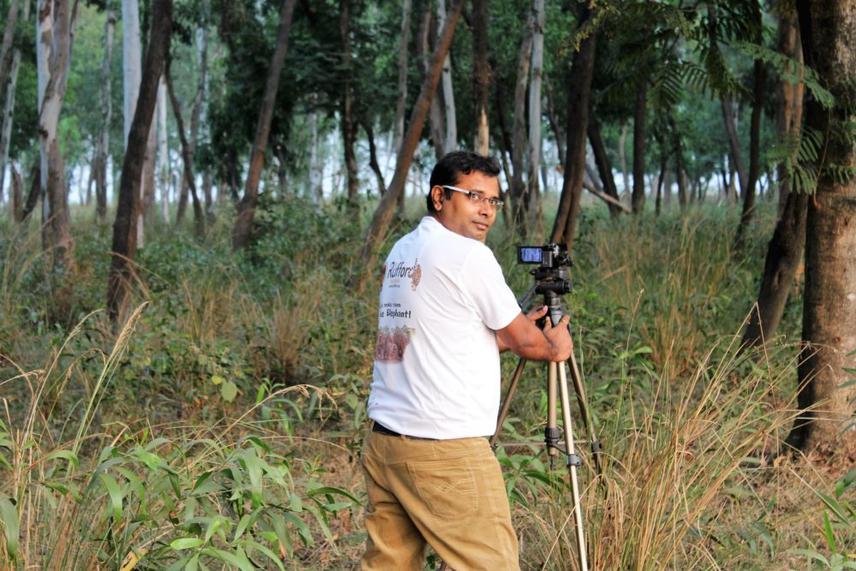Social media video featuring the project.
Save our Elephants
Ecological Restoration of Elephant Corridors and Community Awareness to Reduce Human-Elephant Conflict around Mayurjharna Elephant Reserve, West Bengal, India
Elephant Habitat Restoration Programme and Human-Elephant Conflict Mitigation in Mayurjharna Elephant Reserve, West Bengal, India
Community Capacity Building & Conservation Education to Mitigate Man-Elephant Conflict & Conservation of Eastern India Elephant Population in West Bengal, India
Living with Elephants: Conservation of Endangered Asian Elephants and Threatened Corridors through Human-Elephant Interaction Mitigation in West Bengal, India
The project aims to develop human-elephant interface management plan through habitat study and population survey of the wider elephant influence zone and review of the updated home range. Our objectives are to conduct Conservation Education and Community Capacity Building programme to minimize the depredation and improve the habitat condition.
We will upgrade the ‘Elephant Reserve Research Station’ with several options of volunteering or internships on research, maintain database, alternate livelihood, monitoring Human-Elephant interaction and support existing 'Elephant Driving Squad' to respond to the human-elephant negative interaction.

Asian Elephant (Elephas maximus) is listed as Endangered (EN A2c) in IUCN RDB and Appendix I in CITES. This ‘National Heritage Animal’ of India has highest protection under ‘Wildlife Protection Act-India’ by enlisted in Schedule I.
Southern West Bengal (henceforth SWB), along with ‘Mayurjharna Elephant Reserve’ (henceforth MER), is part of East-Central elephant habitat of India. The elephant population in SWB is expanding its home range beyond ‘MER’ (414.06sq.km.) and the declared ‘Zone of influence’ (1436sq.km). There is a vital need to determine this home range in total since the current information from government records is 12 years old. This elephant reserve was notified in 2002 but still has not been implemented.
In last 10 years the elephant population in SWB has increased by 90% (i.e. 96 in 2005 to 185+ in 2015) expanding their home range in 10 forest divisions. These elephants are sub-divided into 110+ migratory, 30+residential and 40+ Mayurjharna elephants with several sub-groups which make Human-Elephant “Conflict” (HEC) mitigation more challenging. In 2013-14 elephants killed 37 people, injured 57, and damaged 929 huts, and 3935 hectares of crops.
We intend to review these findings and continue the research, education, awareness, and capacity building programme as continuation of previous RSGF project through more intensive research and activity-based capacity-building to develop a comprehensive plan for human-elephant interaction management. We intend to enumerate elephant sub-groups and record their migration range to develop distribution and interface zone maps. The project findings will review old findings together with new one to understand the trends in Human-Elephant Interaction. This database will help to develop seasonal movement calendar of elephants which can be use for agricultural planning and protection. We will distribute unpalatable cash crops and long-awned (bristles) paddy seeds. We will continue the ‘Elephant Reserve Research Centre’ with several options of volunteering or internships on research, maintain database, alternate livelihood, monitoring HEC. The resources can be used by all stakeholders.
These activities are vital for liaison between government agencies and stakeholders to mitigate Human-Elephant negative interactions. During previous RSGF work we documented the nature of elephant migration, interactions with humans, availability of elephant fodder and dependency of villagers on elephant habitat.
Previous RSG projects demonstrated that basic awareness on precautionary measures can reduce the human causalities. Thus there we are continuing the existing community based HEC mitigation programme to develop a comprehensive planning for conflict management and mitigation for MER and influence zone.
Social media video featuring the project.
Save our Elephants